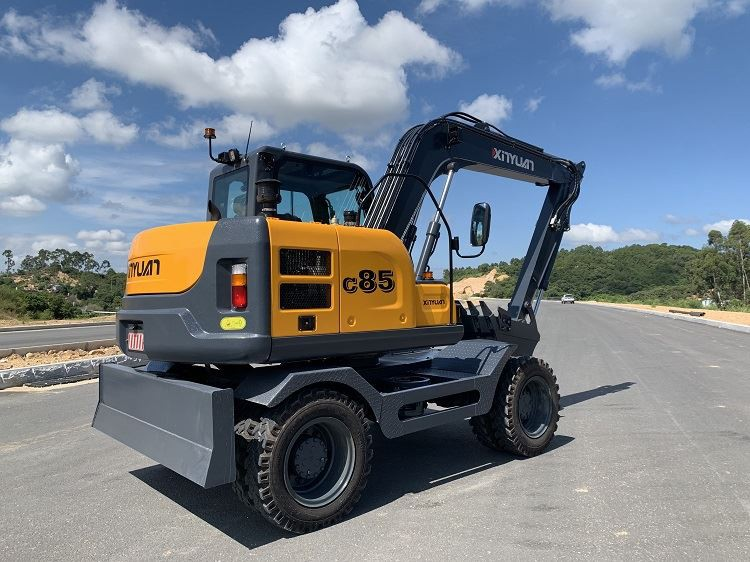For excavators, breaking hammer is the most common working device. This article will summarize and describe some knowledge about breaker, and some operations are for reference only.
1. Selection of steel drill
1) A steel drill with a prefix. It is applicable to the excavation and trenching of various soft and neutral layered rocks.
2) Crosshead drill. It is applicable to the crushing of fine-grained and neutral concrete and soft non layered rock.
3) Flat head steel drill. It is applicable to the crushing of medium hardness stones or broken small stones to make them smaller in one step.
2. Replacement of steel drill
1) First remove the stop pin and 330mm long steel drill pin. When reinstalling, put the steel drill right and insert the steel drill pin.
2) When reinstalling the steel drill, carry out in the reverse order of disassembly. First check whether all parts are worn and broken. If the steel drill is deformed, it shall be polished and repaired, the steel drill pin and the moving part of the steel drill shall be coated with lubricating oil, and then the steel drill shall be installed. If the steel drill pin is seriously deformed, it will make it difficult to replace the steel drill. Therefore, it should be checked every 100-150 hours.
3. Steel drill direction
The direction of the steel drill and the jib shall be consistent, and the steel drill and the working rock surface shall be as vertical as possible. If the steel rod is not perpendicular to the rock surface, the steel rod may slip during operation. When crushing, first adjust the steel drill completely, and then select the rock impact point for impact operation under the condition of stability.
4. Precautions during operation
1) Using appropriate downward force can improve the efficiency of breaker.
2) Adjust the position of the breaker – when the rock cannot be broken by the impact operation of the breaker, it shall be moved to a new operation position.
3) The crushing operation shall not be carried out continuously at the same position. If it is carried out for a long time at the same position, the temperature of the steel drill will rise, its hardness will be reduced, and the lower end of the steel drill will roll up, so as to reduce the operation efficiency.
4) Do not use a steel drill rod as a lever.
5. It is forbidden to work in water without underwater device
Do not submerge any part of the hydraulic breaker into the water until the underwater operation equipment is allocated. When using a breaker in water, it is necessary to configure water equipment and an air compressor capable of producing 6000lpm / 150psl. Working in water without water and air compressor may cause damage to the inside of the breaker.
6. Before leaving the equipment, lower the forearm to confirm whether the equipment is in a safe state.
7. Replace the steel drill
The steel rod will be rolled and deformed in the lower part if it is used for a long time. If the end of the steel rod is worn, the steel rod is easy to slip. In this case, the end of the steel rod should be sharpened, and the hardness of the steel rod will be reduced after repeated grinding. If the distance between the steel drill and the guide sleeve is too large, the piston can not accurately hit the steel drill and cause damage. If the spacing exceeds 9mm, replace the steel drill and guide sleeve.

